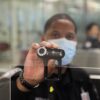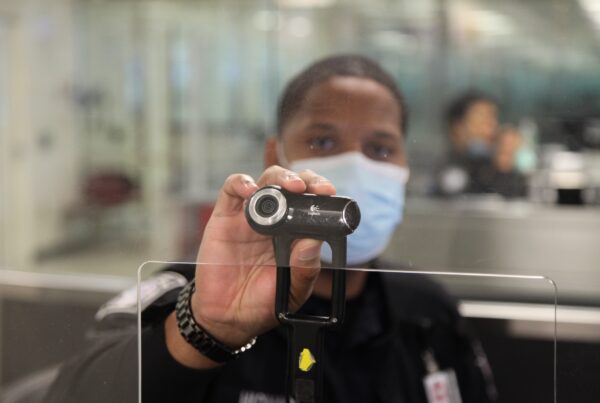The EU has officially started switching on its new border-control system, and the rollout is already affecting how flights are handled across Europe. Here’s the quick version as of 13 Oct 2025:
- EES is live (sort of). Launched on 12 Oct 2025, with a staggered rollout across Europe – some airports are already using it, while others are still coming online. Expect mixed performance and occasional long queues as systems and staffing catch up.
- Full switch by April 2026. During the six-month transition, passports will still be stamped alongside digital checks, but once the rollout is complete across all 29 EES countries, manual stamping will end entirely.
- All travellers included! Everyone crossing an external Schengen border (no matter if they arrive by airline, private jet, yacht, or car) must comply with EES and, once active, ETIAS. The only difference is who checks it: commercial operators must register with EU-LISA and verify pax electronically before boarding, while border guards handle checks for private arrivals.
- Private operators opting in. Even though private operators are exempt from EES and ETIAS requirements, many are registering with the system anyway so they can confirm pax docs and authorisations in advance – helping avoid surprises for their pax on arrival.
So here’s a more detailed look at what’s changing, when, and what actually matters for BizAv operators.
EES (live from 12 October 2025)
Think of EES as the EU’s new digital passport stamp. Operators flying to one of the 29 EES countries need to use the eu-LISA carrier interface to electronically verify whether passengers holding short-stay visas (single or double entry) have already used the number of entries authorised by that visa.
The 29 European countries doing EES:

This check must be done no earlier than 48 hours before the scheduled time of departure.
Remember, this only applies to passengers with short-stay visas for one or two entries. For everyone else (including visa-exempt passengers) border authorities will handle checks during the six-month transition period while EES is phased in across Europe (through 10 April 2026).
So for visa-exempt travellers (like US passengers), operators don’t need to do anything yet under EES – your obligations for them begin later, once ETIAS is live.
Any operators carrying passengers for payment (Part 135 / charter / commercial bizjet operators) must be registered with EU-LISA to access the carrier interface. Operators were expected to complete registration and testing before the October 2025 go-live. Latecomers can still apply, but should expect delays before being fully approved to use the system.
If you’re flying privately and non-commercially, you’re off the hook – you’re not considered a “carrier” and don’t need to register or query anyone (but read more on this below!)
ETIAS (coming in late 2026)
If EES is about recording entries and exits, ETIAS is about screening pax before they arrive. It’s the EU’s version of the US ESTA – a quick online authorisation for visa-exempt travellers.
Operators flying to one of the 30 ETIAS countries (the 29 EES states plus Cyprus) will need to verify before boarding that all visa-exempt pax hold a valid ETIAS travel authorisation.
As with EES, the verification query can be made anytime from 48 hours before departure (that “no earlier than 48 hours” rule).
When ETIAS launches (expected in the last quarter of 2026), there’ll be a six-month transition followed by a six-month grace period, so enforcement will ramp up gradually rather than overnight.
The ETIAS fee is €20 (up from €7) and is waived for travellers under 18 or over 70.
ETIAS obligations mostly apply to travellers, but operators must verify that passengers who need an ETIAS actually hold one before boarding.
Again, this rule only applies to commercial operators. Private, non-commercial flights are not considered “carriers” and don’t have to perform these checks.
For more info on all the basic stuff of EES and ETIAS, check out the homepage here.
Are private flights definitely exempt?
Yes. We asked EU-LISA this question many times, and in many different ways. They have consistently told us that private flights don’t have to do any of this. Here’s a summary:
OPSGROUP: Is EES/ETIAS only required for commercial flights, and not required for private flights?
EULISA: You are correct. A private flight with non-fee paying passengers on board does not fall under the scope of EES/ETIAS. Regarding checks on private flights you can refer to Regulation (EU) 2016/399, section 2.3. Checks on persons on private flights.
OPSGROUP: Just to double-check something on this… Passengers on private flights don’t need to do EES/ETIAS, even when being flown by pilots who are being paid to fly the plane?
EULISA: You are correct. Passengers on private flights do not need to undergo the EES or ETIAS process, even when being flown by pilots who are being paid to operate the aircraft. Natural or legal persons that use private owned aircrafts and do not transport passengers as their profession are not considered carriers and do not need to query the carrier interface.
OPSGROUP: Can we ask for one further item of clarification. A lot of US companies operate private aircraft to the EU. These aircraft are owned and operated by the company. Under US rules, they are private flights. But can you confirm that they fall under your definition of private flights?
EULISA: Please note that the definition of private flights takes into consideration the fact that private flights do not transport passengers commercially but operate for private reasons.
However!!!
Several OPSGROUP members who operate private flights have told us that they have registered for the EES system anyway. The benefit of doing this is that you will be able to confirm prior to the flight that your pax have all the proper documentation they need – potentially avoiding any nasty surprises on arrival.
With the EES system, passports will no longer be stamped, so in the case of a limited visa that only allows a certain number of visits, operators will have no way of confirming that all the allowed visits have not been exhausted unless they check the system.
Also, similar story when ETIAS starts. Though there will be a website to confirm a passenger has an approved ETIAS, EU-LISA says there are a lot of reasons for an ETIAS to be revoked, so checking the system prior to the flight will help make sure the ETIAS is still valid.
More info for operators
For more info, you can check the EU-LISA homepage for operators here.
For answers to pretty much all the questions we can think of, including how to actually use the system as an operator, check this FAQ document provided by EU-LISA.
More on the topic:
- More: OPSCHAT Summary 08 MAR
More reading:
- Latest: More face scans at the US border: BizAv now included
- Latest: Mexico Customs Surprises: Pills, Vapes, and Laptop Rules
- Latest: Greenland NAT Alternates: Dec 2025 Update
- Safe Airspace: Risk Database
- Weekly Ops Bulletin: Subscribe
- Membership plans: Why join OPSGROUP?











 Get the famous weekly
Get the famous weekly 






Can anyone comment on “not managed by an external company”? Our corporate structure is organized in a way that the owner has a dry-lease in place for personal travel. The pilots and maintenance work for a third-party whose only job is to provide pilot and maintenance services to the registered owner and dry lessee.
Similarly, what if you own an aircraft and use full-time contractors to crew or maintain your aircraft?
Well my department falls into the not need to comply with this new mandate and we already registered and paid the fees.
Now What?